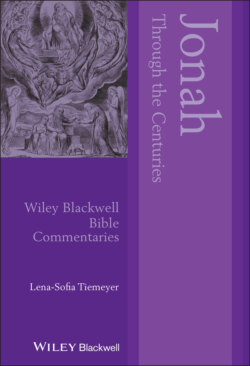Читать книгу Jonah Through the Centuries - Lena-Sofia Tiemeyer - Страница 20
The Fish
ОглавлениеNo introduction to the Book of Jonah is complete without discussion of the fish. Notwithstanding its relatively minor role in the biblical narrative, it has fascinated most interpreters and as a result has generated what might seem to be a disproportionally large number of interpretations. Frankly, most people are familiar with the story of how the fish swallowed Jonah; significantly fewer people can say something insightful about the message of the Book of Jonah.
The fish is particularly interesting because of its varied reception. It metamorphoses throughout the centuries: from being God’s obedient servant, it turns into a monster which ultimately becomes a symbol of death and hell. This ‘monstrification’ of the fish has already begun in the intertestamental literature, where Jonah’s ordeal in the fish is compared with Daniel’s ordeal in the lions’ den (e.g. Joseph and Aseneth, Hellenistic Synagogal Prayers). By contrast, later rabbinical Jewish interpretation takes pains to uphold its benevolent character, to the point that the fish becomes Jonah’s guide through the netherworld (e.g. the Jewish-Hellenistic sermon On Jonah, PRE).
A unique aspect of Jewish interpretation of the fish is surely the concern about its biological gender. This issue stems from the changes to the Hebrew word for ‘fish’, from being referred to as dag to daga and then back to dag again. The longer form has traditionally been understood as a feminine form, giving rise to a set of wondrous interpretations that Jonah was being swallowed by two consecutive fish: first a male fish and then a female fish. At first, Jonah was swallowed by the male fish, but he was not sufficiently uncomfortable in its belly to turn to God. To rectify this apparent problem, God appointed a female fish, pregnant with multiple little fish. Once inside her, Jonah was so cramped that he began to pray to God for his deliverance. This interpretation continued to have its adherents in the mediaeval ages (e.g. Rashi), whereas others sought alternative explanations of the changing vocabulary (e.g. Ibn Ezra).
Turning to Christian interactions with the fish, very early on it becomes a symbol of death (Matt 12:40). This tradition culminates in mediaeval art, as exemplified in the various depictions of hell as the mouth of a massive sea monster (e.g. the old English poem ‘The Whale’). The same tradition is also found, albeit in a very different form, in Jewish mysticism (The Zohar). In patristic interpretation, two intertwined motifs appear: the womb and the tomb. For Cassiodorus, for example, the fish is a type for hell where Jesus spent the time between Good Friday and Easter morning, yet it was also a safe haven for the prophet Jonah where he was kept alive and safe from a watery death. In later Protestant interpretations, Luther and Calvin return to the more biblical imagery: they agree that the fish was a horrific monster, yet nonetheless it kept Jonah alive.
Finally, the obsession with the fish persists into modern days, where Jonah’s time inside the fish often serves as a symbol of life in exile or the diaspora, both in art (e.g. Zalmanovich Abeshaus) and in literature (e.g. Rodoreda).
